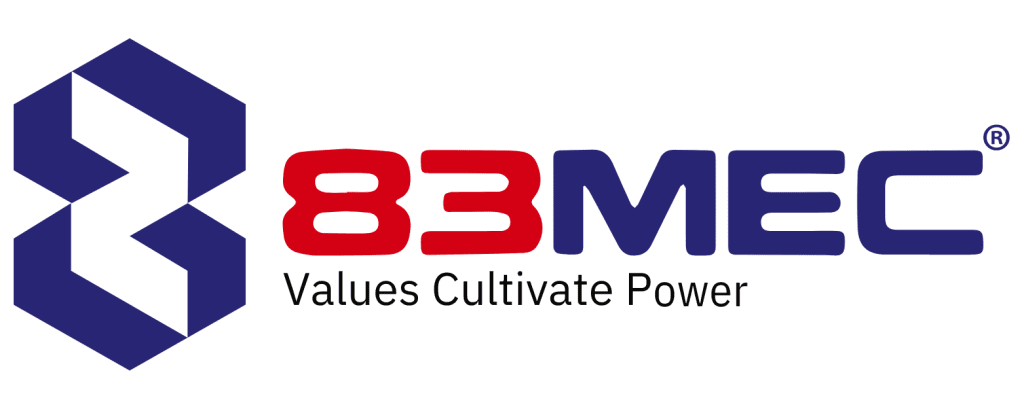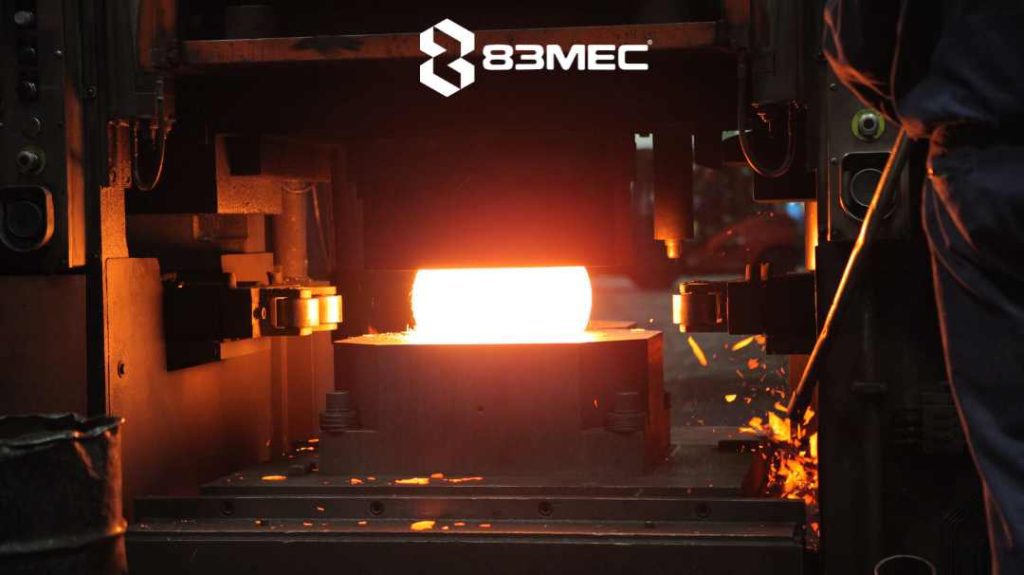Die forging is an essential process in the production of mechanical parts. Choosing a reputable and quality mold forging unit is necessary to ensure product quality and save costs. In this article, we will find out why we should die forging at 83MEC – an experienced and highly regarded unit in this field.
1. What is die forging?
- Die forging is a typical and widely applied pressure machining method today. The metal through the volumetric stamping process will be plastically deformed in the mold cavity thanks to the force of the hammer and press.
- The process of the embryo being deformed in the mold cavity is classified into three main stages:
- Filling: The heated metal is placed in the die cavity and is subjected to a high pressure that fills the cavity and shapes the metal into the desired form.
- Forming: Once the metal has filled the cavity, the dies move closer together, causing the metal to deform and take the shape of the die cavity. This process is known as forming and can include multiple steps to achieve the desired shape.
- Ejection: Once the forming process is complete, the dies are opened and the newly formed metal part is ejected from the die cavity. The part may then undergo further machining or finishing processes to achieve the final desired shape and surface finish.
2. What are the advantages and disadvantages of die forging?
2.1 Advantages
- High gloss and precision.
- Uniform forging mechanical properties.
- Machining of more complex parts than freehand forging.
- The workpiece volume is calculated with minimal error, ensuring it withstands the impact of hammers and presses, helping to save metal.
- The simple operation does not require high professional qualifications of workers.
- Easy process automation.
2.2 Disadvantages
- High cost of forging mold.
- Mold is easy to wear.
- Small forging volume.
3. Die forging methods at 83MEC
- Hot die forging is a metalworking process used to shape metal using extreme heat and pressure. It is a type of closed die forging in which a metal billet is heated to a specific temperature and then forged into a specific shape using a die that is preheated to a similar temperature. The metal is typically heated to a temperature that makes it malleable but not so hot that it becomes liquid.
- Cold forging is a metal forming process that is carried out at or near room temperature, typically below the recrystallization point of the metal. In this process, a metal workpiece is subjected to compressive forces, typically between two dies, to deform and shape it into the desired final form
- Open-die forging, also known as free forging or smith forging, is the process of striking a hammer to deform a piece of metal, typically placed on a stationary anvil. Another approach is to use compression to press the metal between simple dies. These simple dies are generally flat, semi-round or V-shaped. .
- Closed die forging or impression die forging, is a metalworking process where a metal workpiece is placed between two dies containing the desired shape and is designed to apply pressure and force on the workpiece to deform it into the desired shape. The process of closed die forging is usually done under high pressure, which results in an exact and accurate final product
4. Some machinery and equipment are used by 83MEC in die forging machining
- Air hammer 1.5T
- Hammer machine 250kg
- Hammer machine 150kg
- Hydraulic Forging Hammer
- And other specialized machines
Above are the reasons why you should choose die-forging processing at 83MEC. With outstanding experience and capacity, 83MEC is committed to providing customers with quality products and meeting all production needs. At the same time, with strict quality standards and good after-sales service, customers can rest assured when choosing 83MEC as their manufacturing partner. Please get in touch with us immediately for advice and support in the production of high-quality forging products!




